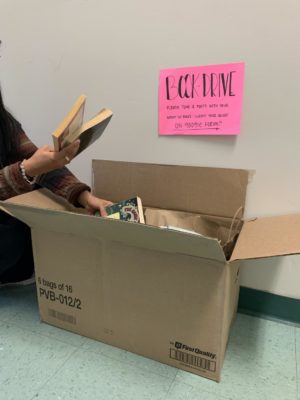Con: donation service hours limit student effort, responsibility
National Art Honor Society offers members service hours for donating art supplies.
May 10, 2023
Faced with the option of helping a teacher after school or donating a can of green beans, many students are inclined to choose the latter. However, both selections yield the same reward: one service hour.
According to Niche, completing 50 to 200 hours of service during high school is recommended for college. Prioritizing their prospects of post-secondary education, many students join numerous honor societies, clubs and extracurriculars in an effort to boost their resumes. As a result, required quotas for service hours skyrocket. With such a large student body, various student organizations have decided that a more convenient way to accommodate everyone is to offer service hours through donations and payments.
This year, CHS’s National Honor Society (NHS) has held two drives: one for food and one for winter clothing, both offering one service hour for each item contributed. Similarly, Key Club has held drives for stuffed animals and books while National Art Honor Society lets members donate art supplies as service hour opportunities.
In one of the most extreme examples of this phenomenon, on February 20, NHS stated that students would be able to receive one service hour by simply donating $5 toward Cultural Night. Out of the 20 slots available for this opportunity, 16 were filled almost immediately after the SignUpGenius link was posted. One day later, NHS revoked their decision, recommending that those interested in donating should consider volunteering during the event instead.
As seen from occurrences such as that and the numerous donation drives around the school, it’s clear that students take advantage of these “easy” service hour opportunities as much as possible. Many students even seek out numerous drives, attempting to donate the maximum amount at each one so they can knock their hour requirements out in a more efficient way.
This practice is advantageous only to those with the resources to participate. It’s easier for wealthier students to buy items to contribute, and subsequently, those who can consistently donate are able to complete their service hour requirements faster. Meanwhile, those who are from lower-income households or want to save their money have to acquire their service hours through actual activities, which can be much more time-consuming.
While donations do provide aid for those in need, they do not help students themselves—the inherent purpose of service hours is rendered null and void when students no longer have to work for their hours. Donating is philanthropy, not community service. It’s a much more passive than active process, since the only effort required is buying or finding items to give away.
According to Mayo Clinic Health System, volunteering is mentally beneficial, generating a sense of purpose and self-assurance. In addition, various acts of service offer new perspectives and experiences. Service learning also encourages the idea of civic responsibility and helps students explore possible career interests, according to FCPS.
Instead of just being able to contribute resources, having restrictions on what constitutes service learning would level the playing field, as more people would have to participate in legitimate volunteering opportunities.
Completing service hours should be about actually working with the community and learning through new experiences. It’s much more logical and rewarding knowing service hours were earned through hard work and determined effort. While donations from school drives are extremely beneficial for those in need, people should be philanthropic not with the intention of gaining service hours, but instead out of the goodness of their heart.




